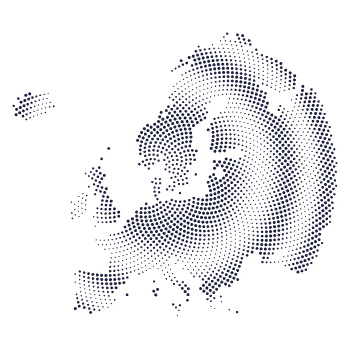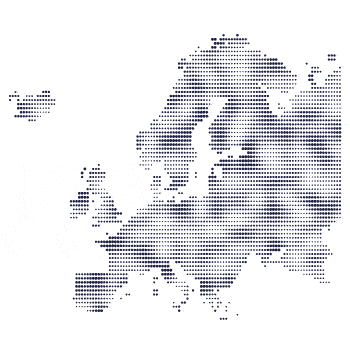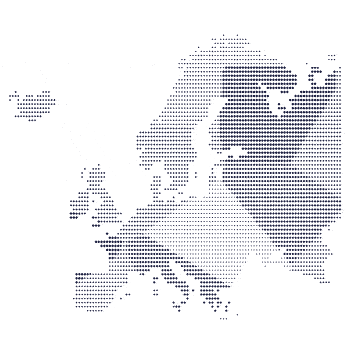Status Quo
Looking back to see what lies ahead
What events have shaped the Internet Economy in the last months?
7 Slides
1
Around the globe, the spread of COVID-19 dominated the news in 2020
1) Source: Press articles, Roland Berger
Show Text
1) Source: Press articles, Roland Berger
To reading list
Events that shaped the 2020 internet economy
January 2020
Jan 1
The California Consumer Privacy Act goes into action, giving residents unprecedented data control rights
Jan 20
Vietnam’s biggest mobile company to roll out 5G services
Feb 10
European VC's stellar decade brought up 40 European unicorns
Feb 19
The European Commission unveils its strategies for data and human centric Artificial
Mar 20
YouTube and Amazon Prime sacrifice streaming quality to relieve European networks due to high demand during coronavirus pandemic
Mar 31
Dutch tech companies start ‘Tech against Corona’ initiative
Apr 7
Germany launches smartwatch app to monitor coronavirus spread
Apr 8
Europe’s tech companies announce nearly USD 500 million in deals
Apr 20
European Commission launches COVID-19 data platform to enable rapid collection and sharing of research data
May 16
Facebook announces plan to build a 23,000 mile undersea cable to bring internet to Africa
May 18
Commissioner Breton debates Facebook CEO Zuckerberg and stresses Europe's digital values
Jun 16
Germany rolls out COVID-19 contract-tracing app to fight second wave
Jun 16
Qualcomm launches new Snapdragon 690 processor to add 5G to budget phones
Jun 19
Google launches possible Pinterest rival named "Keen" that uses machine learning to curate topics
Jun 19
Germany tightens online hate speech rules requiring platforms to send suspected content directly to the Federal police
Jun 22
Virgin Galactic will organize private passenger trips to the space station for NASA
Jul 1
Commission presents European Skills Agenda for sustainable competitiveness, social fairness and resilience
Jul 9
Huawei warns ban would cause ‘huge damage’ to UK digital economy
Jul 14
Huawei 5G kit must be removed from UK by 2027
Jul 17
Cloudflare DNS goes down, taking a large piece of the internet with it
Jul 21
Apple commits to be 100 percent carbon-neutral regarding its supply chain and products by 2030
Jul 23
US hatches plan to build a quantum Internet that might be unhackable
Aug 5
Trump issues executive orders that will effectively ban TikTok and WeChat
Aug 6
Singapore, Australia formalize digital economy pact
Aug 10
SpaceX is manufacturing 120 Starlink internet satellites per month
Aug 18
Tesla and Apple set stock splits to lower share prices — then their stocks rally
Aug 26
Facebook says Apple’s new iPhone update will disrupt online advertising
Sep 1
Apple and Google to make it easier to opt in to virus tracing
Sep 2
Apple, Google and Amazon respond to European tech taxes by raising prices
Sep 2
Amazon, Microsoft and Allianz among corporate founders of new climate-risk-focused data initiative
Sep 2
Microsoft launches a deepfake detector tool ahead of US election
Sep 3
Tech IPOs are booming everywhere but in Europe this year
Sep 9
German cabinet takes aim at Big Tech’s internet presence
Sep 24
Thailand takes first legal action against Facebook, Twitter over content
Sep 30
Brussels drafts rules to force Big Tech to share data
Oct 8
Report: More than 100,000 low-income California college students lack internet access
Oct 18
China concludes pilot project for a central bank-backed digital yuan
Oct 21
US government sues Google
Oct 23
An EU-funded project creates an open source technology stack for business-to-business (B2B) supply chain platforms that can interoperate with one another.
Oct 24
After Jack Ma, co-founder of Alibaba, criticizes Chinese regulators, he disappears for nearly three months
Nov 11
World Economic Forum calls blockchain key to sustainable digital finance
Nov 25
France orders tech giants to pay digital tax
Dec 1
Indonesia considers digital tax even without world consensus
Dec 15
The EU presents the first proposal of Digital Services Act and Digital Markets Act
Dec 16
China releases anti-monopoly guidelines for its platform economy
Dec 23
With Alibaba investigation, China gets tougher on tech
December 2020
Regulation-related
Business-related
2
The European tech sector outpaces the overall economy …
Show Text
- Between 2009 and 2017, the European tech sector's gross value added (GVA) has grown by over 60%.
- During this time, the non-tech sectors in Europe grew by only 24%.
- This shows that the tech sector is a driver of economic growth in Europe.
1) Current prices, tech-sector comprises NACE codes J62 and J63 / Europe = EU27 and UK, Norway, Switzerland
2) Source: Eurostat, Roland Berger
To reading list
3
… but the US tech sector grew even faster, doubling its gross value added since 2002
Show Text
- Between 2009 and 2017, the US tech sector's GVA has doubled.
- During this time, the non-tech sectors in the US grew by only 34%.
- This shows that the tech sector is a driver of economic growth in the US.
- Furthermore, when compared to the European tech sector, the US tech sector grew at a significantly faster pace over the same period
1) Current prices, tech-sector comprises NAICS codes 518, 519 and 5415
2) Source: United States Bureau of Economic Analysis, Roland Berger
To reading list
4
The European tech sector has added 1.6 million jobs since 2009, corresponding to an increase of 54%
Show Text
- The European tech sector not only contributes to the overall economy, but directly employs roughly 1.6 million more people than in 2009 – an increase of 54%.
- During this period, the total labor force in Europe has only grown by 5%.
- The fact that the tech sector´s gross value added has grown more than its workforce hints at an increase in productivity.
1) Tech employees comprise all employees in business sectors J62 and J63 (NACE) / Europe = EU27 and UK, Norway and Switzerland
2) Source: Eurostat, Roland Berger
To reading list
5
The tech work force in the US has grown at roughly the same pace as in Europe
Show Text
- The US tech sector has increased its workforce by 56% since 2009, while the total non-farm labor force has only grown by 9%.
- The relative growth of tech workers in the US is similar to the growth seen in Europe.
- However, while the US tech sector's GVA has grown much faster than in Europe, the comparatively similar increase in tech sector employment hints at a widening productivity gap: Europe's workforce increase has not translated into a similar growth in GVA as seen in the US.
1) Tech employees comprise all employees in business sectors 5415, 518 and 519 (NAICS); non-tech employees include only non-farm labor
2) Source: United States Bureau of Economic Analysis, Daxx.com, OECD, Roland Berger
To reading list
6
On average, European publicly listed internet companies grew their revenues much faster than the average Euro Stoxx 600-member
Show Text
- Between 2012 and 2019, European publicly listed internet companies on average grew their revenues much more than the average member of the Stoxx Europe 600 price index.
- While the mean of top 100 publicly listed internet companies grew revenues by 9% each year since 2012, Stoxx Europe 600 members' revenues grew by only 1% per year.
- For data sampling and comparison, publicly listed internet companies were excluded from the StoxxEurope 600; in 2012, only six of the top 100 publicly listed internet companies were part of the StoxxEurope 600; by 2019, this index included 18 such companies.
1) Top 100 publicly listed companies in Europe by revenues, with internet companies being defined as sectors "Application Software", "E-Commerce Discretionary", "Infrastructure Software", "Internet Based Services", "Internet Media"
2) Source: Bloomberg, Roland Berger
To reading list
7
The difference is less pronounced in the US, where all companies saw stronger revenue growth when compared to Europe
Show Text
- Between 2012 and 2019, US publicly listed internet companies, on average, grew their revenues over twice as much as the average member of the S&P 500 index.
- While the mean of top 100 publicly listed internet company grew revenues by 12% each year since 2012, the average S&P 500 member's revenues grew by only 5% year-on-year.
- For data sampling and comparison, publicly listed internet companies were excluded from the S&P 500; in 2012, 21 of the top 100 publicly listed internet companies were part of the S&P 500; by 2019, this index held 28 such companies.
1) Top 100 publicly listed companies in the US by revenues, with internet companies being defined as sectors "Application Software", "E-Commerce Discretionary", "Infrastructure Software", "Internet Based Services", "Internet Media"
2) Source: Bloomberg, Roland Berger
To reading list
01
Key Takeaway








